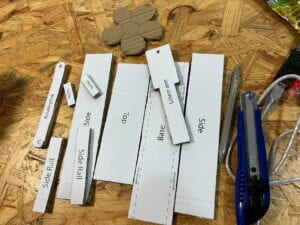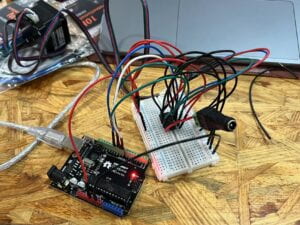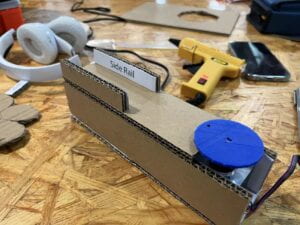In the recitation, I teamed up with Rin. At first, I began to make cardboards and Rin began to do the circuits. Following the instructions, we finally made a blooming rainbow flower.
In the process we met with some difficulties. As we found, the force of friction between two cardboards was too strong to let the cardboards move, so we cut a piece of the cardboard to short it. In the end, it worked!



In the article, I’m interested in this invention, which is made by Stelarc, Exoskeleton, 2003. Here is the introduction of the invention:
“In this performance an exoskeleton [a mechanical, pneumatically activated six-legged device resembling a metal skeleton) amplifies the power of human muscles. Standing on top of it, Stelarc can move in non-human ways. Military researchers are working on related devices to allow soldiers to run at superhuman speeds or carry enormous loads. The ominous appearance of such hybrids helps viewers confront their thoughts about what the human body might become. I-Wei Huang, Steam Walker, 2006. Working in a realm he calls ‘steampunk”, Huang experiments with steam power to animate his devices and insect-bots.Huang is fascinated by Victorian technology and was drawn to the challenge of using this old’ type of power to run miniature robots.”
I think this invention is really interactive, as it can let the robot fit with users really well, which is shown by the robot can amplify the power of human muscles. Compared with the recitation, I think they all transfer man’s action to the machine’s power by building and programming. However, Stelarc’s invention is much more complicated than our recitation, butI think the interaction is similar.
As for my midterm project, I decided to use a device that is similar to the recitation to make my project more interactive. I want to display the wall paintings to make characters in the paintings moveable, which can change their still existing situation.